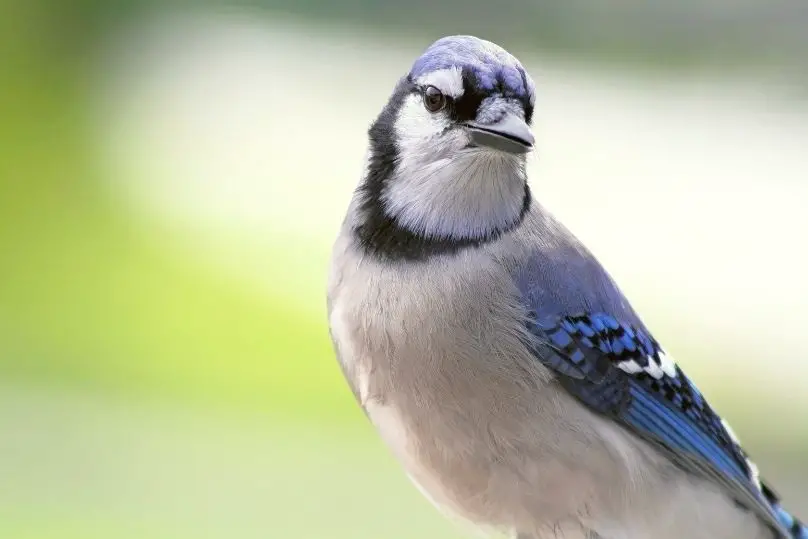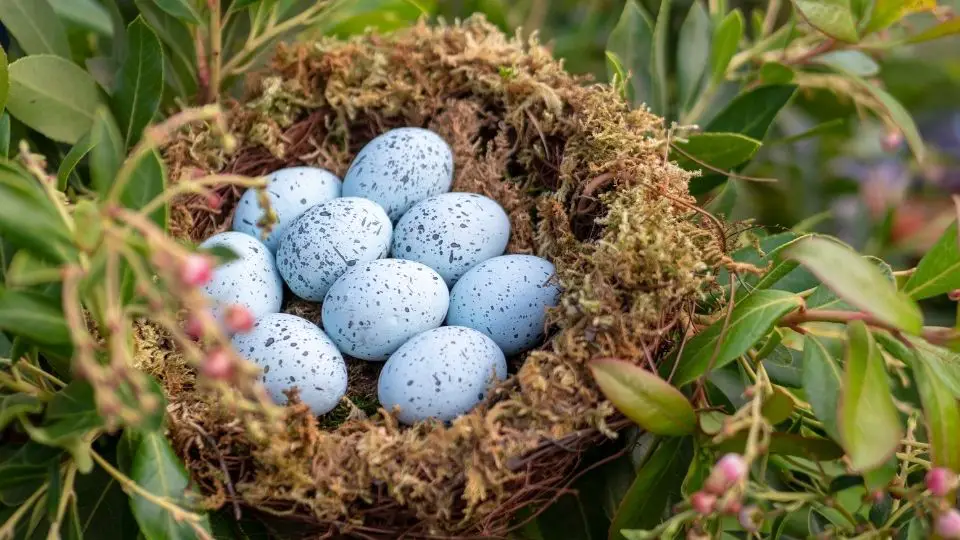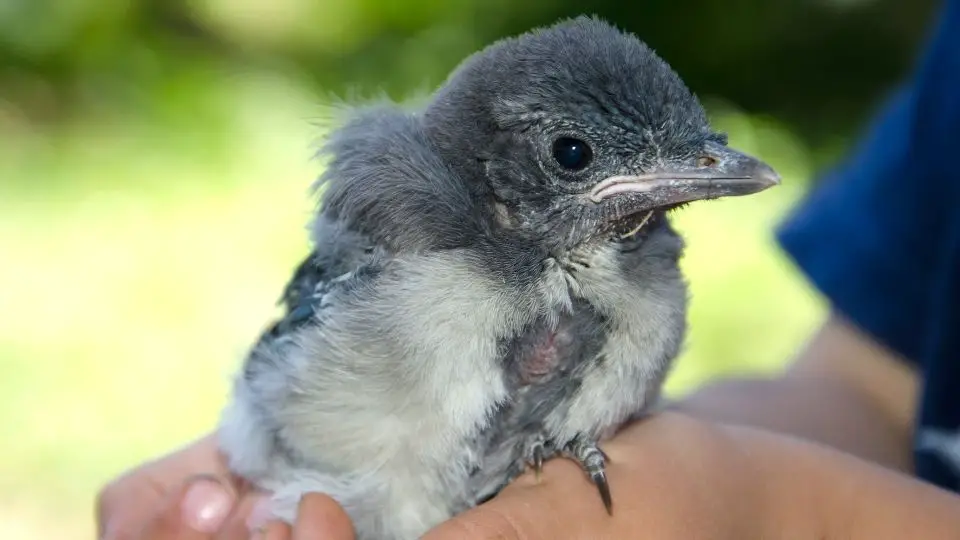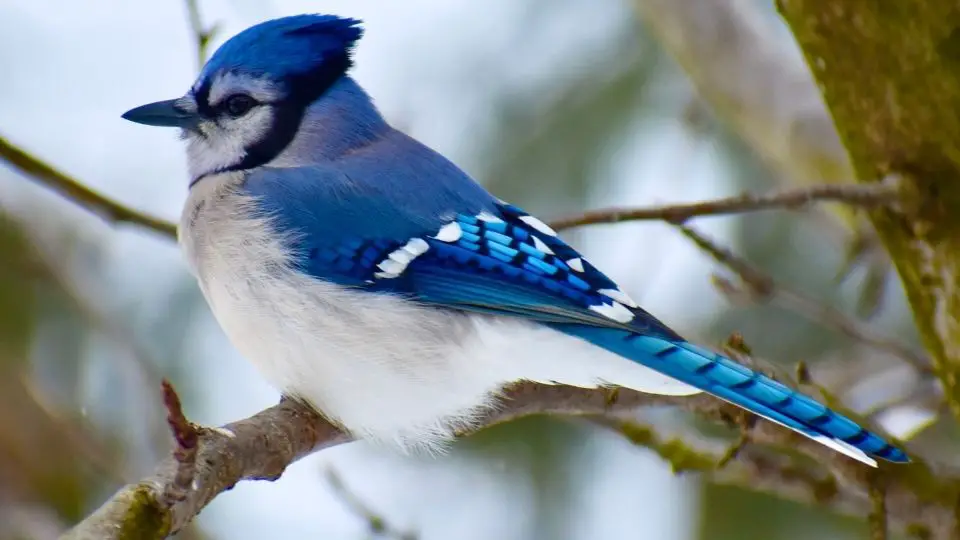A wild blue jay has an average life span of 7 years. In captivity, blue jays can live between 10-12 years with the oldest recorded blue jay having lived for 26 years and 3 months.
Blue jays are typically found in the wild more often than they are in captivity. Although they live an average of about 7 years of age, researchers have observed a Blue Jay live up to 17 years in the wild.
Why do these birds live to be 7 years of age when they can live that much longer in captivity?
The answer boils down to a matter of survival.
What is the life cycle of the Blue Jay songbird?
In the wild, these blue birds live to be around seven years old.
They are in the nest for approximately 2 months of their lives and then begin their migration in loose flocks.

For Blue Jays that have settled in an area, they will typically associate in smaller flocks but fly separately, quickly and swiftly.
Some Blue Jays have been recorded to live for approximately 10 years in the wild, but a Blue Jay rarely passes of natural causes.
Like most animals in the wild, blue jays can become prey to hungry predators or pass from competition and scarcity of food.
During what time of year do Blue Jay lay their eggs?
Blue jays often lay their eggs in the spring, starting as early as March, and will continue their breeding season into the late summer.
However, most blue jays lay their eggs in the spring, with a few found by birdwatchers later into the season.
Most female Blue Jays will lay approximately 2-7 eggs per brood. A brood is another term birdwatchers use to describe a litter of hatchlings.
In the video below, we rounded up 10 of the most fascinating facts about Blue Jays!
Where do Blue Jays lay their eggs?
Blue Jays dwell in regions of southern Canada down to Central America; they will typically lay their eggs almost 15 feet above the ground in deciduous or coniferous trees.
Both the female and male blue jays will participate in building the nest for their offspring; the male usually gathers the materials for the nest, while the female assembles the nest itself.
Baby blue jay nests are constructed with twigs, strips of tree bark, grass, weeds, and sometimes mud and moss.
The mother bird defends the nest and protects it against predators such as crows, woodpeckers, corvids, and red-shouldered hawks.
One of the main reasons blue jays are so temperamental is because they are highly territorial.
What color are the Blue Jay eggs?
After the breeding season has ended, Blu Jays will typically brood their eggs, which are blueish, and sometimes light brown in color.
The blueish pigment of the eggs is caused by the compound biliverdin, a naturally occurring pigment in egg shells.
Blue Jays produced adorably small eggs that are approximately 1″ – 1.3″ in length and less than an inch in width.
The color of the eggs does not deter predators.

How long do baby Blue Jays stay in their nest?
They stay in their nest for around 21 days after hatching. Once they hit the ground, they are more likely to become the prey of ground predators and other birds.
One of the reasons that the average age for a North American blue jay to survive in the wild is so low is that blue jays have many circumstances working against them.

When they leave the nest, they are not well equipped with the means to survive predators.
Cats, snakes, crows, squirrels, raccoons, ravens, and opossum are natural predators of the fledgling blue jays.
Fledging birds are baby birds that have not yet learned how to fly. It may take about five days for a baby Blue Jay to learn to fly. Many of these baby blue jays do not survive beyond a year.
What do baby Blue Jays eat?
Fledglings eat whatever their parents eat, including sunflower seeds, acorns, and bugs.
Finding food can be a struggle for Blue Jays, particularly in the winter, when food sources are scarce.
In the summer these songbirds eat bugs, and acorns, and hang around residential areas at bird feeders.
They even store a cache of food to make it through the winter.
They typically live in deciduous forests, and some of them migrate to the rocky mountains for a better chance at survival.
How to tell how old a Blue Jay songbird is?
After adolescence, it is difficult to determine the exact age of a blue jay.
However, there are some ways to determine an average age of a blue jay by birdwatchers at backyard feeders.
It is likely under one year if the bird has fluffy, soft feathers.
An older adult blue jay will have a bright blue crest that is fully developed, a white belly and the bird is likely between 1-7 years of age.
When are Blue Jays songbirds ready to mate?
At the start of winter, male birds will court female birds, and when the female bird decides upon a mate, it mates with the same male bird for the rest of its life.
The blue jays begin their mating competition when the female blue jay calls and gathers all the males to a tree.
More than a dozen male blue jays will follow the female, flying, singing, and dancing until they tire. The last male blue jay with enough stamina to continue to pursue the female will be the selected mate of the female.
They will build a nest in a pine or oak tree with plenty of coverage to stay protected.
The female bird stays on the nest to protect it from hungry predators.
Sometimes, the female bird leaves the nest briefly for food, while the male will bring her food.

How to tell whether a Blue Jay is a female or male?
Blue jays are unique because it is not easy to differentiate between male and female birds like cardinals or house sparrows.
Both North American birds have very similar plumage.
For bird watchers – spotting the difference between males and females is a little more nuanced.
It is easiest to discern their sex during mating season when male blue jays court and chase the female blue jays.
During nesting season, the female blue jay sits and broods her eggs on the nest.
Outside of mating rituals, it is difficult to determine a male and female blue jay.

